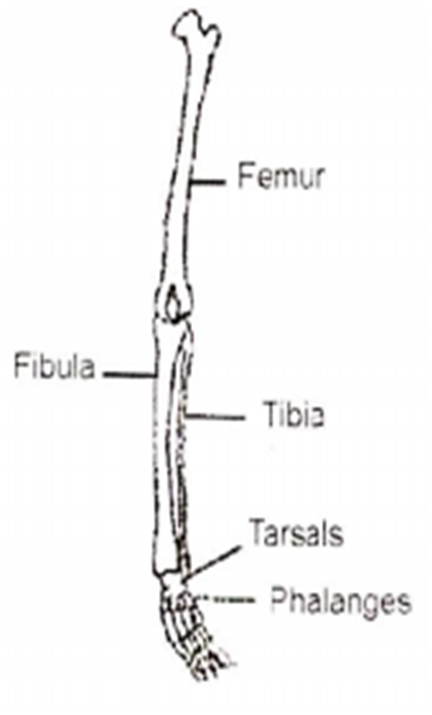 Multiple Choice Questions
Multiple Choice QuestionsWhat is diapedesis?
A kind of amoeboid movement.
The process of filtration of urea in kidney.
A type of locomotion found in Hydra
Migration of WBCs into the tissue spaces from blood capillaries
Skeletal muscles appear striated due to presence of two characteristic proteins in alternating dark and light bands. Which of the following is a correct match of the protein with its light refractive property and colour
| Protien | Colour | Property |
| Myosin | Light | Anisotropic |
| Actin | Dark | Anisotropic |
| Myosin | Dark | Isotropic |
| Actin | Light | Isotropic |
A cricket player is fast chasing a ball in the field. Which one of the following groups of bones are directly contributing in this movement
Femur, malleus, tibia, metatarsals
Pelvis, ulna, patella, tarsals
Sternum, femur, tibia, fibula
Tarsals, femur, metatarsals, tibia
D.
Tarsals, femur, metatarsals, tibia
Tarsal- Tarsal, any of several short, angular bones that in humans make up the ankle and that—in animals that walk on their toes (e.g., dogs, cats) or on hoofs—are contained in the hock, lifted off the ground. The tarsals correspond to the carpal bones of the upper limb.
Femur- Femur, also called thighbone, or hind leg. The head forms a ball and socket with the hip (at the acetabulum), being held in place by a ligament (ligamentum teres femoris) within the socket and by strong surrounding ligaments.
Metatarsals- Anatomical terms of bone. The metatarsal bones, or metatarsus are a group of five long bones in the foot, located between the tarsal bones of the hind- and mid-foot and the phalanges of the toes
Tibia- The tibia, also known as the shinbone or shankbone, is the larger, stronger, and anterior (frontal) of the two bones in the leg below the knee in vertiberates (the other being the fibula, behind and to the outside of the tibia), and it connects the knee with the ankle bones.
Given diagram shows bone of the left human hindlimb as seen from front. It has certain mistakes in labeling. Two of the wrongly labelled bones are

tibia and tarsals
femur and fibula
fibula and phalanges
tarsals and femur
Assertion: Eukaryotic cells have the ability to adopt a variety of shapes and carry out directed movements.
Reason: There are three principal types of protein filaments - microfilaments, microtubules and intermediate filaments, which constitute the cytoskeleton.
If both assertion and reason are true and reason is the correct explanation of assertion.
If both assertion and reason are true but reason is not the correct explanation of assertion.
If assertion is true but reason is false.
If both assertion and reason are false.
During muscle contraction
size of 'A' bands remain same
size of 'H' zone becomes smaller
size of 'I' band decreases
diameter of fibre increases
The main difference between white and yellow fibres is of
protein
colour of fibres
both (a) and (b)
none of the above
